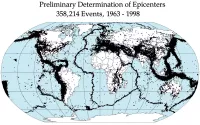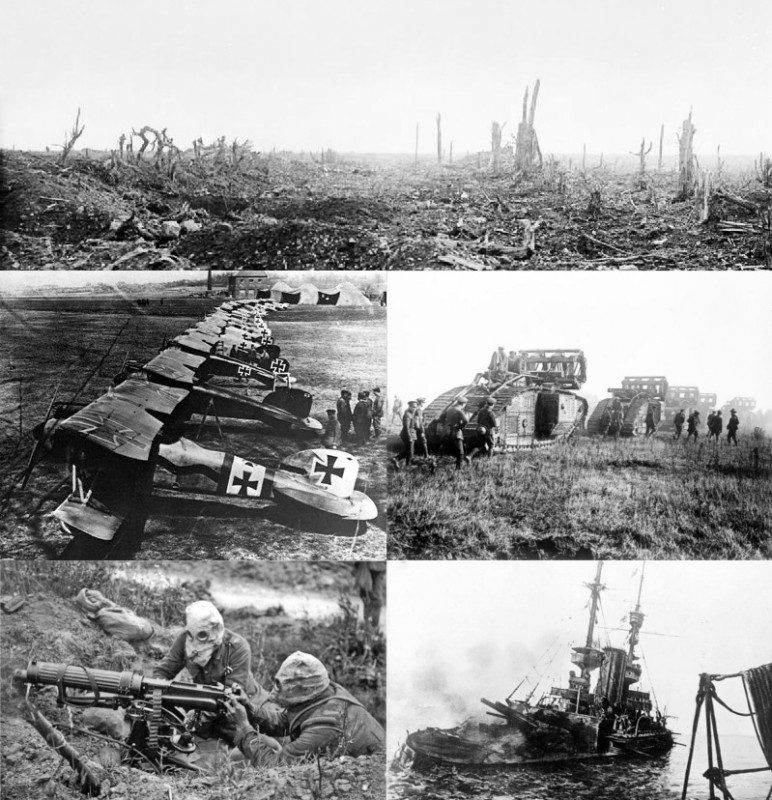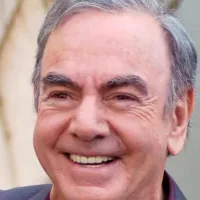Thessaloniki is the second-largest city in Greece, with a metropolitan population of over one million. It serves as the capital of the geographic region of Macedonia, the administrative region of Central Macedonia, and the Decentralized Administration of Macedonia and Thrace. Historically, it was known as "the co-capital" during the Byzantine Empire, alongside Constantinople.
1902: Ottoman Census of Thessaloniki
According to the Ottoman Census of 1902, Thessaloniki's Sephardic community made up half of the population.
1902: Earthquake in Thessaloniki
In 1902, Thessaloniki was hit by a strong earthquake.
1903: Bombings in Thessaloniki
In 1903, a Bulgarian anarchist group known as the Boatmen of Thessaloniki planted bombs in several buildings in Thessaloniki, including the Ottoman Bank, with some assistance from the IMRO.
1908: Young Turk Revolution
In 1908, the Young Turks started the Young Turk Revolution from the city of Thessaloniki, which lead to of them gaining control over the Ottoman Empire and put an end to the Ottoman sultans power.
1908: Electric Lamp Posts
In 1908, the city streets of Thessaloniki were illuminated with electric lamp posts.
1909: Banking investment in Thessaloniki
In 1909, Thessaloniki was a major center for investment from Western Europe, with the Banque de Salonique having a capital of 20 million French francs.
1911: Makedonia newspaper published
In 1911, Makedonia was first published in Thessaloniki. It was the first newspaper published in Thessaloniki.
November 1912: Surrender to Greece
On November 8, 1912, the Greek Army accepted the peaceful and unconditional surrender of the 25,000-strong Ottoman garrison at Thessaloniki.
1912: Territorial Extent
Between 1826 and 1912, Thessaloniki was the capital of the Sanjak of Selanik within the wider Rumeli Eyalet (Balkans), and subsequently the capital of Selanik Eyalet (after 1867, the Selanik Vilayet) which consisted of the sanjaks of Selanik, Serres and Drama.
1912: Tram operated by Belgian company
From 1912 until 1940, the Belgian Compagnie de Tramways et d' Éclairage Électrique de Salonique operated the tram system.
1912: Inauguration of the mayoralty
In 1912, the institution of mayor was inaugurated under the Ottoman Empire, with Osman Sait Bey appointed as the city's first mayor.
1912: Sinking of Ottoman Ironclad Feth-i Bülend
On October 18, 1912, the sinking of the Ottoman ironclad Feth-i Bülend in Thessaloniki harbour, damaged Ottoman morale.
1912: Official Name Revival
Thessaloniki was revived as the city's official name in 1912, when it joined the Kingdom of Greece during the Balkan Wars.
1912: Government announcement of redevelopment program
With the 100th anniversary of the 1912 incorporation of Thessaloniki into Greece, the government announced a large-scale redevelopment programme for the city.
March 1913: Assassination of George I
On March 18, 1913 George I of Greece was assassinated in Thessaloniki by Alexandros Schinas.
1913: Jewish population of Thessaloniki
About 1913, the Jewish population was almost 40% of Thessaloniki's population of 157,000.
1913: Thessaloniki incorporated into the Kingdom of Greece
After the Balkan Wars, Thessaloniki was incorporated into the Kingdom of Greece in 1913.
1913: Ethnic Composition Change
By 1913, the ethnic composition of Thessaloniki had changed, with the population standing at 157,889, consisting of Jews at 39%, Turks (29%), Greeks (25%), Bulgarians (4%), Roma (2%), and others at 1%.
December 1915: Austrian Air Raid
On December 30, 1915, an Austrian air raid on Thessaloniki alarmed many town civilians and killed at least one person.
1915: Allied Expeditionary Force
In 1915, during World War I, a large Allied expeditionary force established a base at Thessaloniki for operations against pro-German Bulgaria.
1916: Provisional Government of National Defence
In 1916, pro-Venizelist Greek army officers and civilians, with the support of the Allies, launched an uprising, creating a pro-Allied temporary government by the name of the "Provisional Government of National Defence".
August 1917: Great Thessaloniki Fire
On August 18, 1917, most of the old centre of Thessaloniki was destroyed by the Great Thessaloniki Fire, leaving 72,000 people homeless.
1917: Rebuilding designs for Thessaloniki
After the Great Thessaloniki Fire of 1917, a team of architects and urban planners chose the Byzantine era as the basis of their rebuilding designs for Thessaloniki's city centre.
1917: Ano Poli not engulfed by fire
Ano Poli, the Upper Town, was not engulfed by the great fire of 1917.
1917: Population Expansion
Between 1870 and 1917, driven by economic growth, the city's population expanded by 70%, reaching 135,000 in 1917.
1917: Great Thessaloniki Fire
In 1917, a devastating fire swept through Thessaloniki, destroying the city's historic centre.
1917: State of Thessaloniki Disestablished
The State of Thessaloniki was disestablished with the unification of the two opposing Greek governments under Venizelos, following the abdication of King Constantine in 1917.
1917: Fire
The church of Hagios Demetrios burned down during the Great Thessaloniki Fire of 1917, as did many other city monuments, but it was rebuilt.
1917: Archaeological dig unearths artefacts
The construction of the Thessaloniki Metro unearthed artefacts from as late as the Great Thessaloniki Fire of 1917.
1918: First metro proposal
The creation of a metro system for Thessaloniki goes back as far as 1918, when Thomas Hayton Mawson and Ernest Hébrard proposed the creation of a Thessaloniki Metropolitan Railway.
1922: Refugee settlement in Toumba
After the 1922 Asia Minor disaster, refugees settled in Toumba.
1922: Settlement of refugees in Kalamaria
In 1922, Kalamaria was inhabited mainly by Greek refugees from Asia Minor and East Thrace.
1923: Asia Minor and Pontian refugees
Due to the genocide of 1923, Thessaloniki is the birthplace of many known traditional singers, such as Chrysanthos Theodoridis and lyra musician Gogos Petridis, because of many Asia Minor and Pontian refugees
1923: Population exchange
The population exchange of 1923-24 led to refugee settlement in areas like Toumba.
March 1926: Greece re-emphasized equal rights
In March 1926, Greece re-emphasized that all citizens of Greece enjoyed equal rights, leading a considerable proportion of the city's Jews to decide to stay.
1926: Aristotle University founded
In 1926, Aristotle University of Thessaloniki was founded. It is currently the largest university in Greece.
1926: AVEZ pasta industry construction
In 1926, the AVEZ pasta industry, one of the first industrial factories in northern Greece, was built.
1926: Thessaloniki International Fair established
In 1926, the Thessaloniki International Fair was established. The fair is hosted annually and focuses on economic development.
1929: Birth of Christos Sartzetakis
In 1929 Christos Sartzetakis was born. He was the First Instance Judge that worked on the Grigoris Lambrakis’ case.
May 1936: Strike by tobacco workers
In May 1936, a massive strike by tobacco workers led to general anarchy in the city, and Ioannis Metaxas ordered its repression. The events inspired Yiannis Ritsos to write the Epitafios.
November 1940: Bombardment by Fascist Italy
In November 1940, Thessaloniki was heavily bombarded by Fascist Italy resulting in casualties and damaged buildings.
1940: Tram company purchased by Hellenic State
In 1940, the Belgian Compagnie de Tramways et d' Éclairage Électrique de Salonique, which operated the tram system, was purchased by the Hellenic State.
March 1941: Promise to Yugoslavia
On March 25, 1941 Thessaloniki had been promised to Yugoslavia as a reward for joining the Axis.
April 1941: Fall to Nazi Germany
On April 8, 1941, Thessaloniki fell to the forces of Nazi Germany and went under German occupation.
May 1941: Founding of Eleftheria resistance organization
On May 15, 1941, one month after the occupation of the country, the first resistance organization in Greece, "Eleftheria", was founded in Eptalofos.
1941: German occupation of Greece
In 1941, during World War II, the Germans occupied Greece and began actions against the Jewish population in Thessaloniki.
March 1943: Deportation of Jews
On March 15, 1943, the Nazis began the deportation of the city's Jews to Auschwitz and Bergen-Belsen concentration camps.
September 1943: Establishment of Dulag 410 transit camp
In September 1943, the Germans established the Dulag 410 transit camp in Thessaloniki for Italian Military Internees.
1943: Nazi actions against Jewish population
In 1943, the Nazis began brutal actions against the historic Jewish population in Thessaloniki, forcing them into a ghetto near the railroad lines and beginning deportation to concentration and labor camps, leading to the extermination of approximately 94% of the city's Jews during the Holocaust.
May 1944: Execution of young Greeks by Nazis
In May 11, 1944, young Greeks were executed by the Nazis in Xirokrini.
October 1944: Liberation of Thessaloniki by ELAS forces
On October 30, 1944, forces of ELAS, led by Markos Vafiadis, entered Thessaloniki as liberators after battles with the retreating German army and the Security Battalions of Poulos.
1946: Tobacco industry in Thessaloniki
In 1946, 35% of all tobacco companies in Greece were headquartered in Thessaloniki, highlighting the historical importance of the tobacco industry to the city's economy.
1946: Monarchy referendum
In the 1946 monarchy referendum, the majority of the locals in Thessaloniki voted in favor of a republic, contrary to the rest of Greece.
1957: Frappé coffee invented
In 1957, Frappé coffee was invented in the Thessaloniki International Fair.
1957: Thessaloniki Urban Transport Organization (OASTH) founded
In 1957, Thessaloniki Urban Transport Organization (OASTH) was founded. It operates public transport buses in Thessaloniki.
1957: Tram system disestablished
In 1957, the tram system in Thessaloniki was disestablished by the government of Konstantinos Karamanlis.
1960: Thessaloniki International Film Festival established
In 1960, the Thessaloniki International Film Festival was established. It has become one of the most important film festivals in Southern Europe.
1961: Establishment of the National Theatre of Northern Greece
In 1961, the National Theatre of Northern Greece was established, managing the city's main theaters.
1962: Establishment of the Archaeological Museum of Thessaloniki
In 1962, the Archaeological Museum of Thessaloniki was established, housing important ancient Macedonian artifacts.
1962: Thessaloniki Song Festival hosted
In 1962, the city began hosting the Thessaloniki Song Festival, Greece's most important music festival, at Alexandreio Melathron.
May 1963: Assassination of Grigoris Lambrakis
On 22 May 1963, Grigoris Lambrakis was assassinated. The event led to a political crisis.
1966: Dimitria festival founded
In 1966, the Dimitria festival was founded. The festival is named after the city's patron saint of St. Demetrius and includes music, theatre, dance, local happenings, and exhibitions.
1968: Circular metro line proposed
In 1968, a circular metro line was proposed for Thessaloniki.
1969: Z directed by Costa Gavras
In 1969, Costa Gavras directed Z, a film based on the assassination of Grigoris Lambrakis.
1973: Placement of equestrian statue of Alexander the Great
In 1973, the equestrian statue of Alexander the Great was placed on the promenade.
1975: Original design capacity of the motorway
In 1975, the motorway was originally designed to handle 30,000 vehicles daily.
June 1978: Series of powerful earthquakes
On June 19–20, 1978, Thessaloniki suffered a series of powerful earthquakes, registering 5.5 and 6.5 on the Richter scale, causing considerable damage and resulting in 51 deaths.
1979: Tobacco industry in Thessaloniki
In 1979, 44% of all tobacco companies in Greece were headquartered in Thessaloniki, highlighting the historical importance of the tobacco industry to the city's economy.
1982: Aris B.C. dominates the league
From 1982 to 1993 Aris B.C. dominated the league, regularly finishing in first place.
1985: Common Name
By about 1985, the most common single name became Thessaloniki.
1987: First serious metro proposal
In 1987, the first serious proposal for the Thessaloniki metro was presented.
1988: Metro construction started and abandoned
In 1988, construction of the Thessaloniki metro briefly started before stalling and being abandoned due to lack of funding.
1988: UNESCO World Heritage listing
In 1988, several early Christian and Byzantine monuments of Thessaloniki were added to the UNESCO World Heritage list.
1993: Aris B.C. dominates the league
From 1982 to 1993 Aris B.C. dominated the league, regularly finishing in first place.
1995: Thessaloniki GDP growth rate
Between 1995 and 2008 Thessaloniki's GDP saw an average growth rate of 4.1% per annum.
1995: Earthquake in Thessaloniki
In 1995, Thessaloniki was hit by a strong earthquake.
1996: Thessaloniki GDP growth rate
In 1996 Thessaloniki's GDP saw an average growth rate of +14.5%.
1997: European Capital of Culture
In 1997, Thessaloniki was celebrated as the European Capital of Culture, sponsoring events across the city and the region.
1997: Thessaloniki as European Capital of Culture
In 1997, as the European Capital of Culture, Thessaloniki saw the birth of its first opera, which today forms an independent section of the National Theatre of Northern Greece.
1997: Thessaloniki Holocaust memorial built
In 1997, the Thessaloniki Holocaust memorial in Eleftherias Square was built in memory of all the Jewish people from Thessaloniki murdered in the Holocaust.
1997: Design of Environmental Education Centre in Kordelio
The Environmental Education Centre in Kordelio was designed in 1997 and is one of a few public buildings of bioclimatic design in Thessaloniki.
1997: Thessaloniki Song Festival hosted
The Thessaloniki Song Festival was hosted until 1997.
1999: Documentary Festival founded
In 1999, the Documentary Festival was founded. The festival focuses on documentaries that explore global social and cultural developments.
2003: Thessaloniki hosted the 2003 FIBA Under-19 World Championship
Thessaloniki hosted the 2003 FIBA Under-19 World Championship in which Greece came third.
2004: Hosting of 2004 Summer Olympics football events
In 2004, Thessaloniki hosted a number of the football events as part of the 2004 Summer Olympics.
2004: Effort to improve motorway features
In 2004, a large effort was made to improve the motorway features of the Thessaloniki ring road.
2004: Kaftanzoglio Stadium served as an official Athens 2004 venue
In 2004, the Kaftanzoglio Stadium served as an official Athens 2004 venue.
2005: Thessaloniki GDP growth rate
In 2005 Thessaloniki's GDP saw an average growth rate of −11.1%.
2005: Museum of Byzantine Culture awarded Council of Europe's museum prize
In 2005, the Museum of Byzantine Culture was awarded the Council of Europe's museum prize.
2005: Thessaloniki Song Festival hosted
In 2005, the city began hosting the Thessaloniki Song Festival again.
2005: Iraklis successful in volleyball
Iraklis emerged as one of the most successful volleyball teams in Europe in 2005.
2006: Student population
As of 2006, the city's total student population was estimated around 200,000.
2006: Construction of Thessaloniki metro began
Construction of the Thessaloniki metro began in 2006 with a budget of €1.57 billion ($1.77 billion).
October 2007: Thessaloniki hosted the first Southeastern European Games
In October 2007, Thessaloniki played host to the first Southeastern European Games.
2007: Port handled 162,731 passengers
In 2007, the Port of Thessaloniki's passenger terminal handled around 162,731 passengers.
2008: Thessaloniki GDP growth rate
Between 1995 and 2008 Thessaloniki's GDP saw an average growth rate of 4.1% per annum.
2008: Thessaloniki Song Festival hosted
In 2008, the city hosted the Thessaloniki Song Festival for the last time.
2008: Opening of first section of Νέα Παραλία
In 2008, the first section of Νέα Παραλία (new promenade) opened, and was awarded as the best public project in Greece of the last five years by the Hellenic Institute of Architecture.
2009: Proposals for new tram lines
Before the economic crisis of 2009, there were various proposals for new tram lines.
2009: Aristotle University ranked
For the academic year 2009–2010, Aristotle University was ranked as one of the top universities in the world for arts and humanities.
2009: Kaftanzoglio Stadium hosted events
In 2009, the Kaftanzoglio Stadium hosted the National Greek Cup and the 2009 IAAF World Athletics Final.
2010: Existence of cultural activities agency
By 2010, the agency established to oversee the cultural activities of the year 1997 was still in existence.
2010: Aristotle University
In 2010, Aristotle University of Thessaloniki numbered more than 80,000 students. Since 2010, Thessaloniki is also home to the Open University of Thessaloniki.
2010: Cabinet meeting in Thessaloniki
In 2010, during the first months of the 2010 Greek debt crisis, the entire cabinet of Greece met in Thessaloniki to discuss the country's future.
2010: Port of Thessaloniki traffic
In 2010, more than 15.8 million tons of products went through the Port of Thessaloniki, making it the second-largest port in Greece after Aghioi Theodoroi, surpassing Piraeus. At 273,282 TEUs, it is also Greece's second-largest container port after Piraeus.
2010: Visitors at the Thessaloniki International Fair
In 2010, over 250,000 visitors attended the Thessaloniki International Fair exposition.
2010: Overnight stays of foreign tourists
In 2010, overnight stays of foreign tourists in the city were around 250,000.
January 2011: Kallikratis reform implementation
As of January 1, 2011, according to the Kallikratis reform, the Thessaloniki Urban Area is made up of six self-governing municipalities and one municipal unit.
February 2011: International train links suspended
In February 2011, all international train links from Thessaloniki were suspended due to the Greek economic crisis.
December 2011: Replica of Las Incantadas commissioned
On December 6, 2011, it was announced that a replica of Las Incantadas would be commissioned and later put on display in Thessaloniki, thanks to a private donation of €180,000.
2011: Cruise ships expected in Thessaloniki
In 2011, a total of 30 cruise ships were expected to arrive at Thessaloniki, indicating its growing importance as a port for cruising in the eastern Mediterranean.
2011: Government introduced large scale redevelopment plans
In 2011, the government introduced large scale redevelopment plans throughout for the Thessaloniki ring road.
2011: Municipality of Thessaloniki budget
In 2011, the municipality of Thessaloniki had a budget of €464.33 million.
2011: Municipality budget for reconstruction
In 2011, the municipality of Thessaloniki's budget for the reconstruction of important areas of the city and the completion of the waterfront was estimated at €28.2 million (US$39.9 million).
2011: Thessaloniki regional unit GDP
In 2011, the regional unit of Thessaloniki had a Gross Domestic Product of €18.293 billion and the economy contracted by −7.8%.
October 2012: Centennial celebration of incorporation into Greece
On October 26, 2012, Thessaloniki celebrated its centennial since its incorporation into Greece.
2012: First Greek-built smartphone introduction
In 2012, MLS Multimedia introduced the first Greek-built smartphone in Thessaloniki.
2012: Municipality of Thessaloniki budget
In 2012, the budget of the municipality of Thessaloniki stood at €409.00 million.
2012: First Thessaloniki Pride parade
In 2012, the city hosted its first pride parade, Thessaloniki Pride, which took place between 22 and 23 June.
2012: Tenders expected to be announced
In early 2012, tenders were expected to be announced for the total restructuring of the A16 motorway.
2013: National Geographic Top Tourist Destination
In 2013, National Geographic Magazine included Thessaloniki in its list of top tourist destinations worldwide.
2013: Police brutality at Thessaloniki Pride
In 2013, transgender people participating in the Thessaloniki Pride parade became victims of police brutality.
2013: Greece represented in Eurovision by Thessalonians
In the Eurovision Song Contest 2013, Greece was represented by Koza Mostra and Agathonas Iakovidis, both from Thessaloniki.
January 2014: Waterfront opening
The waterfront reconstruction project in Thessaloniki, for which the municipality had allocated a budget in 2011, opened in January 2014.
May 2014: Daily through trains restarted
In May 2014, daily through trains to Sofia and Belgrade were restarted, after being suspended, but later stopped again due to COVID-19 restrictions.
2014: Financial Times FDI Recognition
In 2014, Financial Times FDI magazine (Foreign Direct Investments) declared Thessaloniki as the best mid-sized European city of the future for human capital and lifestyle.
2014: European Youth Capital
In 2014, Thessaloniki was the European Youth Capital.
November 2015: New Art Thessaloniki Started
In November 2015, the new Art Thessaloniki started for the first time as an international contemporary art fair from 29.10 – 1 November 2015.
September 2018: Construction of second new terminal began
In September 2018, construction of a second new terminal began at "Makedonia" International Airport of Thessaloniki.
2018: PAOK FC wins Greek championship
During the 2018–19 season, PAOK FC won the Greek championship without a defeat.
2018: Construction on the Holocaust Museum of Greece began
In 2018, construction on the Holocaust Museum of Greece began in Thessaloniki.
2018: Overnight stays of foreign tourists
In 2018, overnight stays of foreign tourists were estimated to reach 3,000,000 people.
2019: New runway of airport completed
After long delays, the new runway of the "Makedonia" International Airport of Thessaloniki was completed in spring 2019.
February 2021: New T2 finished
In February 2021, the New T2 was finished three months ahead of schedule in "Makedonia" International Airport of Thessaloniki.
2021: Upgrade and expansion of Thessaloniki Airport
In 2021, infrastructure improvements came with the upgrade and expansion of Thessaloniki Airport.
2021: European Commission criticizes Greece for air pollution
In 2021, the European Commission took Greece to task for failing to curb consistently high air pollution levels in Thessaloniki.
2021: Thessaloniki metropolitan area population
In 2021, the Thessaloniki metropolitan area had a population of 1,091,424.
2021: Thessaloniki population
In 2021, the municipality of Thessaloniki was the second most populous in Greece, with a resident population of 317,778.
2022: Death of Christos Sartzetakis
Christos Sartzetakis, the First Instance Judge that worked on the Grigoris Lambrakis’ case, died in 2022.
June 2023: Greek legislative election
As of the June 2023 Greek legislative election the largest party in Thessaloniki is the New Democracy with 35.28% of the vote, followed by Syriza (17.52%).
2023: PAOK FC wins Greek championship
During the 2023–24 season, PAOK FC won the Greek championship.
November 2024: Line 1 of Thessaloniki Metro began operation
Line 1 of the Thessaloniki Metro began operation on 30 November 2024.
2024: Opening of Thessaloniki Metro
In 2024, the Thessaloniki Metro opened.
2024: Thessaloniki to host EuroPride
Thessaloniki is scheduled to host EuroPride in 2024.
2025: Line 2 of Thessaloniki Metro to enter service
Line 2 of the Thessaloniki Metro is currently under construction and will enter into service in late 2025.
2025: Estimated completion of redevelopment project
The ministry has said that the Thessaloniki redevelopment project will take an estimated 15 years to be completed, in 2025.
2026: Holocaust Museum of Greece is set to open
The Holocaust Museum of Greece, currently under construction in Thessaloniki, is set to open in 2026.
Mentioned in this timeline
Germany officially the Federal Republic of Germany is a Western...
World War II - was a global conflict between the...

An earthquake is the shaking of the Earth's surface caused...

World War I a global conflict between the Allies and...

Football encompasses a variety of team sports centered on kicking...
Turkey officially the Republic of T rkiye is a transcontinental...
Trending

47 minutes ago Neil Diamond, Bob Dylan's opinion, Hugh Jackman's karaoke story, and home details.
7 months ago Seth's Sacrifice and Keleher's Exit: 'The Rookie' Season 7 Shocks!

8 months ago Normani surprised by DK Metcalf's proposal, showcases moves on Jennifer Hudson Show.
2 months ago China's National Games Flame Lit with Deep-Sea Methane Hydrate; Macau to be Sports Hub

23 days ago Benson Boone Cancels Birmingham Concert Last Minute, Issues Apology to Disappointed Fans.

2 months ago Tim Allen Finds Forgiveness After Erika Kirk's Eulogy, Antonio Brown Reacts
Popular
Aftyn Alyssa Behn is an American politician currently serving as...

William Franklin Graham III commonly known as Franklin Graham is...

Candace Owens is an American conservative political commentator and author...

XXXTentacion born Jahseh Dwayne Ricardo Onfroy was a controversial yet...

Marjorie Taylor Greene known as MTG is a U S...

Cristiano Ronaldo often nicknamed CR is a Portuguese professional footballer...